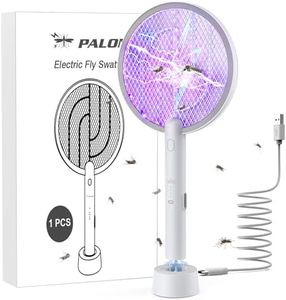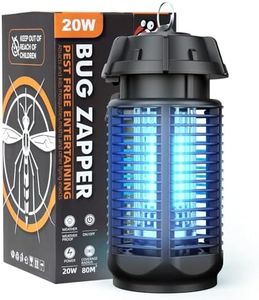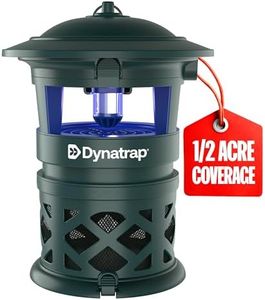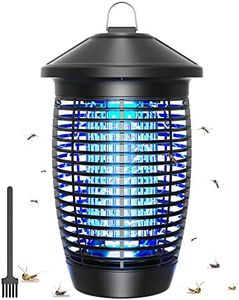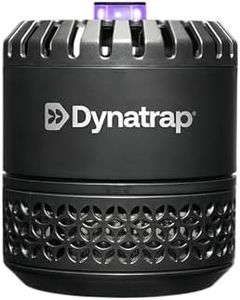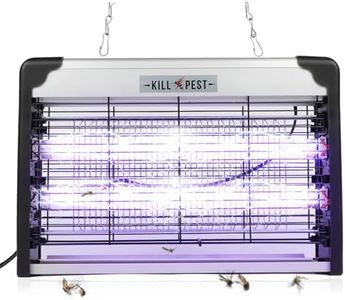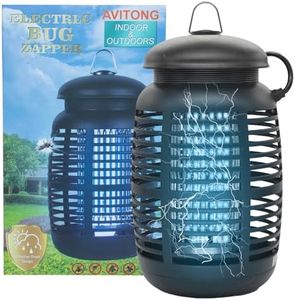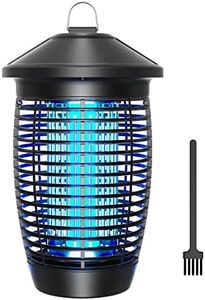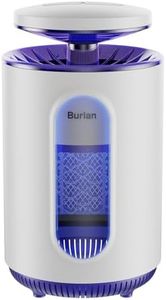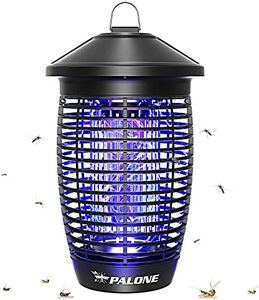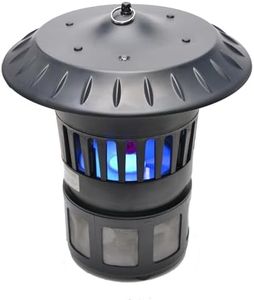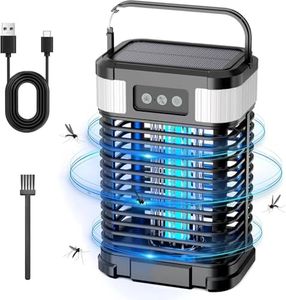We Use CookiesWe use cookies to enhance the security, performance,
functionality and for analytical and promotional activities. By continuing to browse this site you
are agreeing to our privacy policy
10 Best Indoor Bug Zappers
From leading brands and best sellers available on the web.By clicking on a link to a third party's website, log data is shared with that third party.
Buying Guide for the Best Indoor Bug Zappers
Choosing an indoor bug zapper can make your living space more comfortable by effectively managing flying insects. There are many types to consider, each with different features designed for varied needs, from small bedrooms to larger living areas. The best approach is to think about the size of your space, what types of bugs you are targeting, and how the zapper will fit into your daily routine. Learning to understand the important features of bug zappers can help you make a choice that suits your situation perfectly.Coverage AreaCoverage area refers to the maximum space that the bug zapper is effective in. This is important because a device that’s too small for your room won’t catch enough bugs, while an overly large one might be louder or brighter than necessary. Coverage is often stated in square feet or meters. Small models are suitable for bedrooms or bathrooms, medium ones for living rooms or kitchens, and large versions for open-plan spaces or basements. It's best to measure the area where you’ll use the zapper, and pick a model that matches or slightly exceeds that size.
Light Type and LureThe light type describes the bulb used in the zapper to attract bugs. Most indoor zappers use ultraviolet (UV) light, which is especially attractive to flying insects, but some use LED or other light sources. Better lure mechanisms can mean higher effectiveness. Devices might also use attractants like scent pads, increasing their appeal to bugs. If you mainly have moths or fruit flies, a regular UV light likely works well. For mosquitos, look for a zapper that includes attractant pads. Consider your main pest type when choosing.
Safety FeaturesSafety features are important, especially if you have children or pets. These may include protective outer grills that prevent fingers from reaching the electrified grid, an enclosed design, or automatic shut-off when opened. For households with kids or pets, focus on zappers with strong protective housing. In adult-only environments, standard grills may be enough. Always consider how accessible the zapper will be and choose safety features accordingly for peace of mind.
Noise LevelSome zappers make a loud zapping sound when they catch a bug, which might be startling or annoying, especially in quiet environments like bedrooms. There are quieter models designed to reduce this noise, or that use less dramatic ways to trap bugs. If you’re sensitive to noise or plan to use the zapper at night, look for devices advertised as quiet or with lower-voltage grids. If you’ll use it in a busy room, noise may be less of a concern.
Ease of CleaningBug zappers collect dead insects, which need to be cleaned out regularly. Some have removable trays, others need to be disassembled partially, and some require tipping or shaking. If you want a low-maintenance product, look for zappers with easy-access trays that simply pull out. Regular or heavy users should focus on models designed for easy and quick cleaning.
Mounting Option and SizeBug zappers can be free-standing, wall-mounted, or designed to sit on a table or countertop. Size and shape affect where you can put the device and how much room it takes up. If you have limited space, smaller tabletop or wall-mount models are useful. For larger rooms or flexible placement, a standing model might work best. Think about your space and where you want to place the zapper, then match the model's mounting style and size to your needs.
